This is neither the best guide to Tuscany, nor the most thorough.
It is however the kind of guide that’s the most interesting because it involves being taken by the hand and welcomed like family to a timeless country where locals showed me a kind of hospitality that runs through their bones.
In the province of Siena, change comes slow, or as Bilbo Baggins added, “if it comes at all”. Here I met Sandra Petreni, and her husband Carlo amid rolling mosaic hills of vineyards, wheat, and stands of cypress trees.
Born in Siena, Petreni’s art has been exhibited in her home region of Tuscany and elsewhere across Italy, and considering her locale of Monteriggioni, and her self-professed appreciation for the “fine things,” I had no doubt she would be the ideal guide for a low key two-day trip to one of the country’s most visited places.
“To be honest I like the finer things in life; I like the best flavors, the things with the most beauty,” she told me over an aperitif within the castle walls of Monteriggioni, a fortified town built in the 1210s by the Senese as a position to defend their homes during their medieval-period wars with Florence.
“The people here, every year they have a medieval period faire. One comes in dressed like medieval Senese and the tourists must exchange their euros for florins,” she told me, using the name of the hard currency of the Middle Ages. Atop the walls, the view across the hillocks was classic Tuscany: old buildings surrounded by vineyards and olive grows, tussocks of high grass coated in wildflowers alongside winding country roads that disappear into thickets of trees.
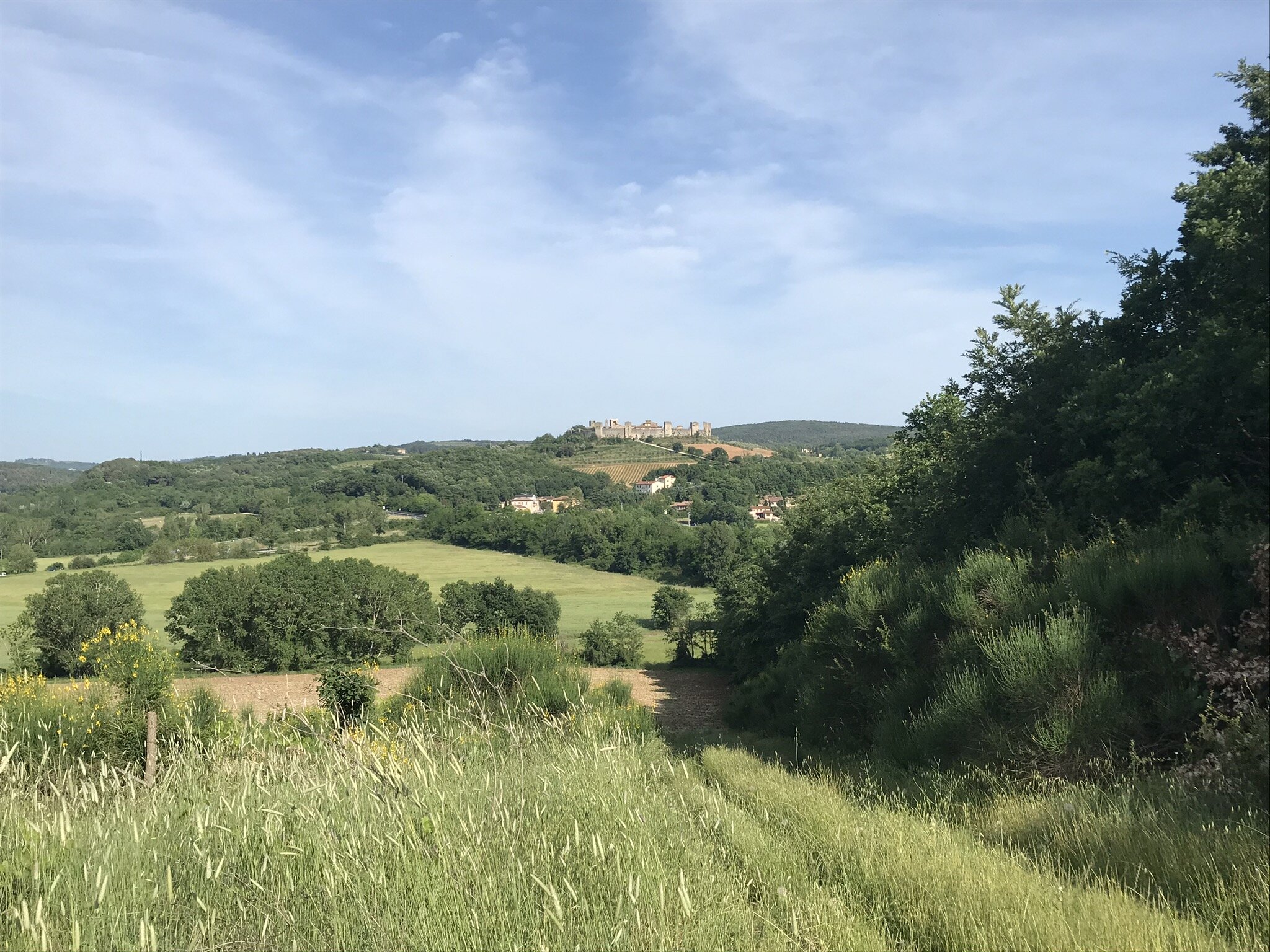
Horse and brush
Sandra studied art in Florence, or Firenze, the city of Siena’s old enemies. “I decided to study art in Firenze because I had more opportunity to learn different things,” she told me. Others I met would explain to me that the walled city of Siena, despite being studded with art galleries and less than half an hour from Monteriggioni, has a difference in identity between those Senese born within the walls and those born without which cannot be understated.
“Over the years Firenze and Siena remained in constant combat and competition,” says Petreni. “But I decided to come back to Siena ‘in patria’ for work because it’s my culture, my home”.
As a friend of hers — a psychotherapist from Argentina would later tell me, anyone can come to Siena, but it’s difficult to find friends or work; not because the Senese are snobbish or exclusionary, but simply because newcomers can’t crack the nut of day to day customs and traditions inside the walls that govern Senese life, and the locals just dance completely to their own tune. It’s not impossible though, Gustavo made it work for example.
As we crested a hill, I saw the trademark swish and flick of a horse tail swatting flies. We had arrived in a small country stable, built of stone when Lincoln was trying to go off the gold standard to fight the Civil War. Petreni, as with so many of her countrymen, is enamored with the horse, and they feature as a centerpiece of her work.
I met Sandra when, following the sale of her dearest horse, my wife needed a painter talented enough to not only perfectly portray her horse, but one that could embody the spirit of their bond, of all the experiences that came during 9 years of competing together as a team.
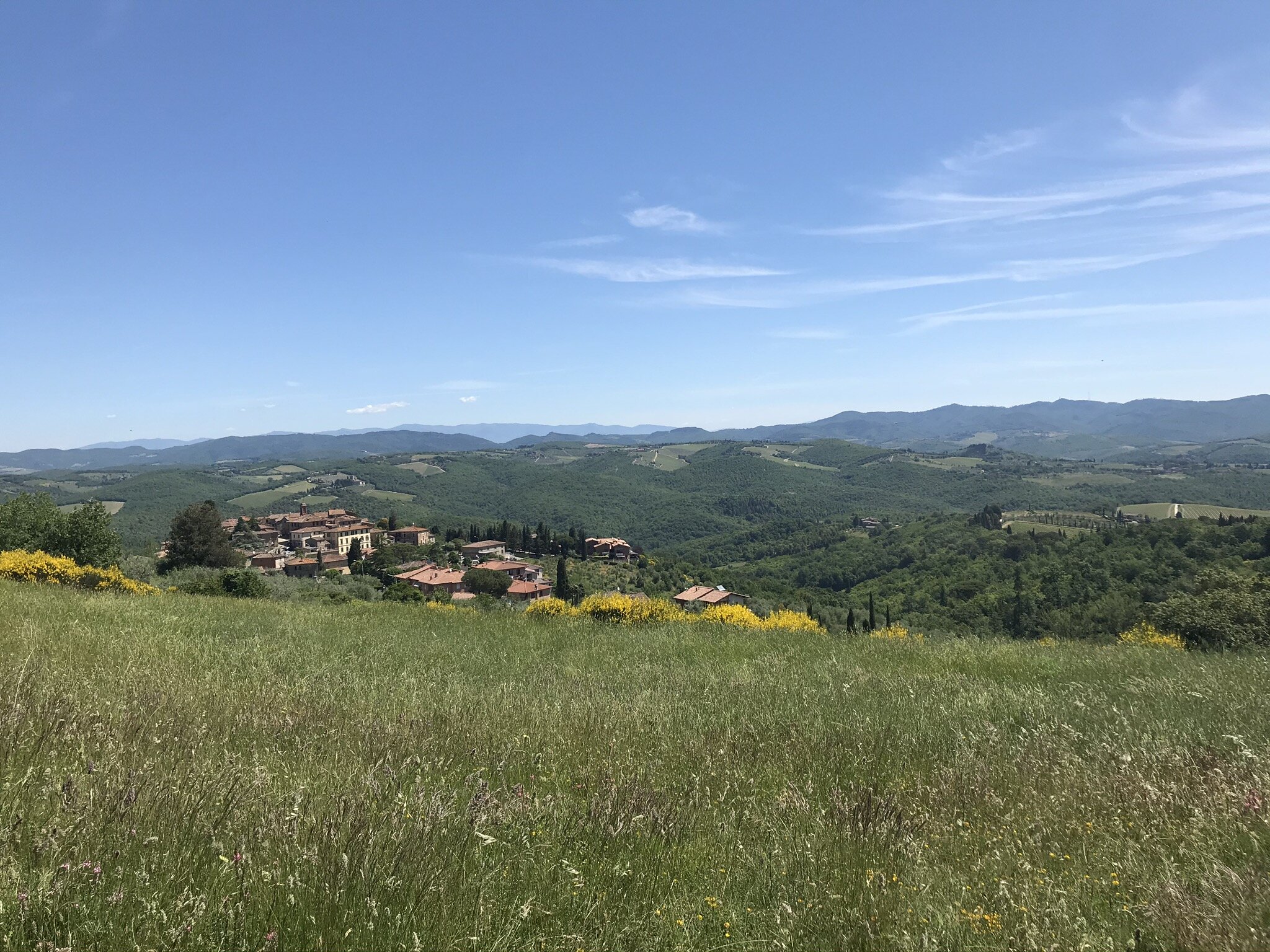

“Horses arrived in my work when I spent three months in London to learn English; only I didn’t learn English because I was always on my own shut inside museums!” she said. “I fell in love with this painting of a horse, but I didn’t remember its name, so I tried to reproduce it”.
“The next April on my birthday, I dreamed of this painting, and I thought ‘you know it’s my birthday, why don’t I learn how to ride? How beautiful would that be?’”
The hill upon which the stable sat was the highest for kilometers in all directions, and in the dry heat, sun, and wind, one could stare at the panorama for hours. The air was thick with the sweet smell of ginestra, an arid weather plant that cloaks the hills and valleys in yellow flowers.
“He has trouble breathing; up here the air is better,” Sandra said consoling her horse, who I could tell was clearly wincing, despite my lack of equestrian upbringing of any kind. As easy as it was to discern the horse’s discomfort, I could tell that horses weren’t simply subject matter for Sandra, but rather a total dedication.
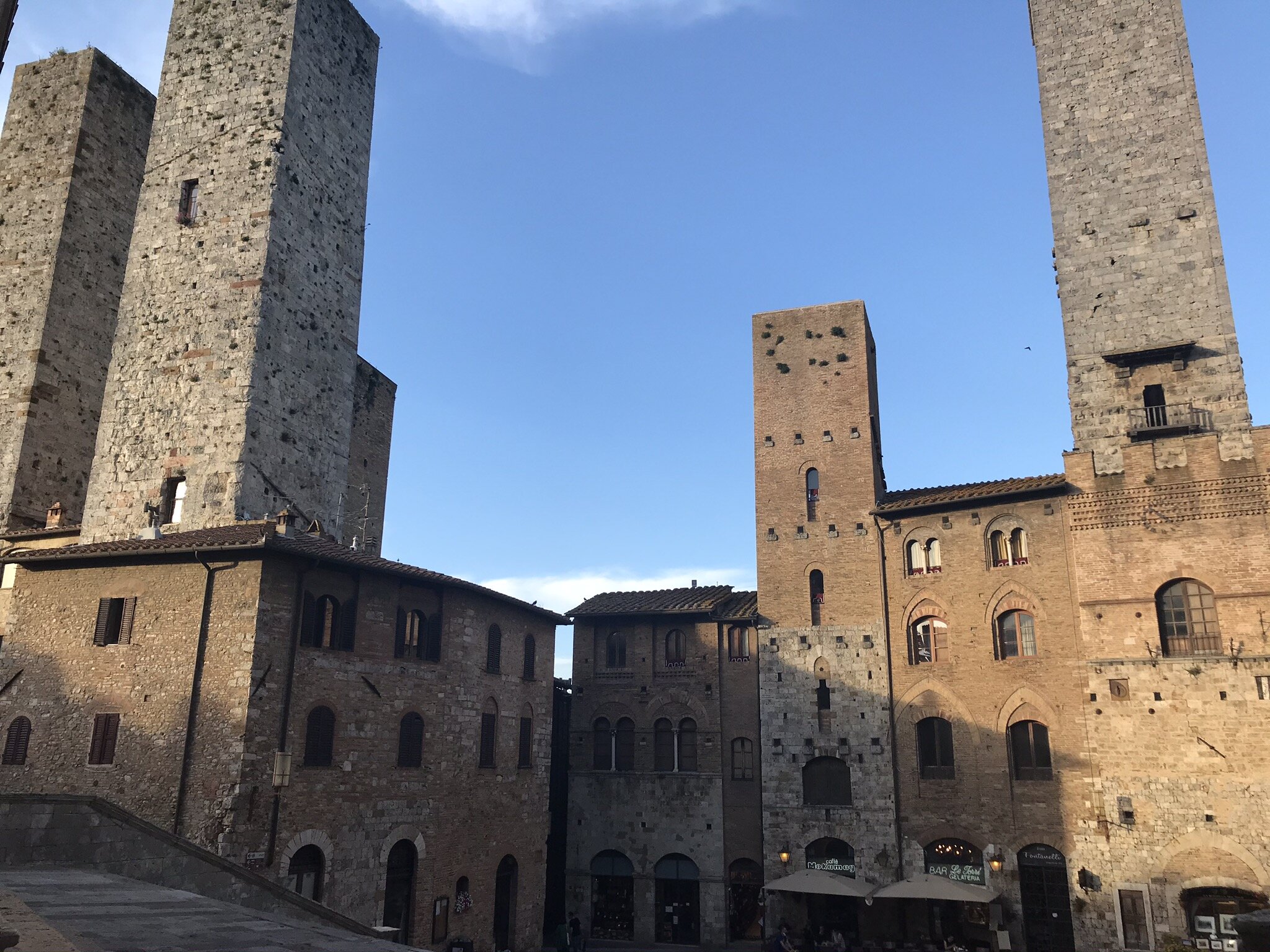
Lunch and San Gimignano
Arriving at Petreni’s house, I sat down for lunch as part of a “Best of Siena,” consisting of 7 dishes, across four courses, all four of each had its own accompanied wine. Food and wine from Italy’s most famous region are intensely delicious, and this author can report no surprises.
Crostini con pâté di milza, or little toasted bread slices covered in a thick sauce of herbs and spleen meat. Tonno del Chianti, or pork cut and cooked like tuna and served in olive oil. Ribolita con cipolle rosse, or bean soup with red onions. Trippa alla Senese, or tripe in a Siena-style sauce, and Pici al ragu di cinta Senese: hand-rolled pasta, similar to German spätzle, in a red meat sauce with slices of ham. After all that came a 10-centimeter thick bistecca alla Fiorentina, grilled for 7 minutes and served rare.
We started with a Vernaccia di San Gimignano, a white wine with low sweetness and acidity that comes from the province we were sitting in. Next was from Bolgheri a sort of “Best of Toscano blend” called Lagone. With much respect and humility, I can calmly say this is the best red wine I’ve had in my life, which has included 15 months of Italian citizenship.
The pairing with the pasta dish was a Chianti reserva from 2017, which ditches the normal Chianti acidity for a smoother, yet fuller-bodied red that was exceptional.
After this monumental lunch, Sandra led our merry band on an excursion to San Gimignano, pronounced “Jimin-Yano,” a locale that she described as a “typical Tuscan medieval town”. While those words ring true, and San Gimignano is not a famous Italian destination, it would nevertheless be one of the most important national cultural sites if it were located in most other countries in the world.
The immaculately preserved walls and Medieval architecture, all in brown brick perched on top of a high hill, it’s the sort of Tuscan version of the best neighborhood in a city for bars and restaurants.
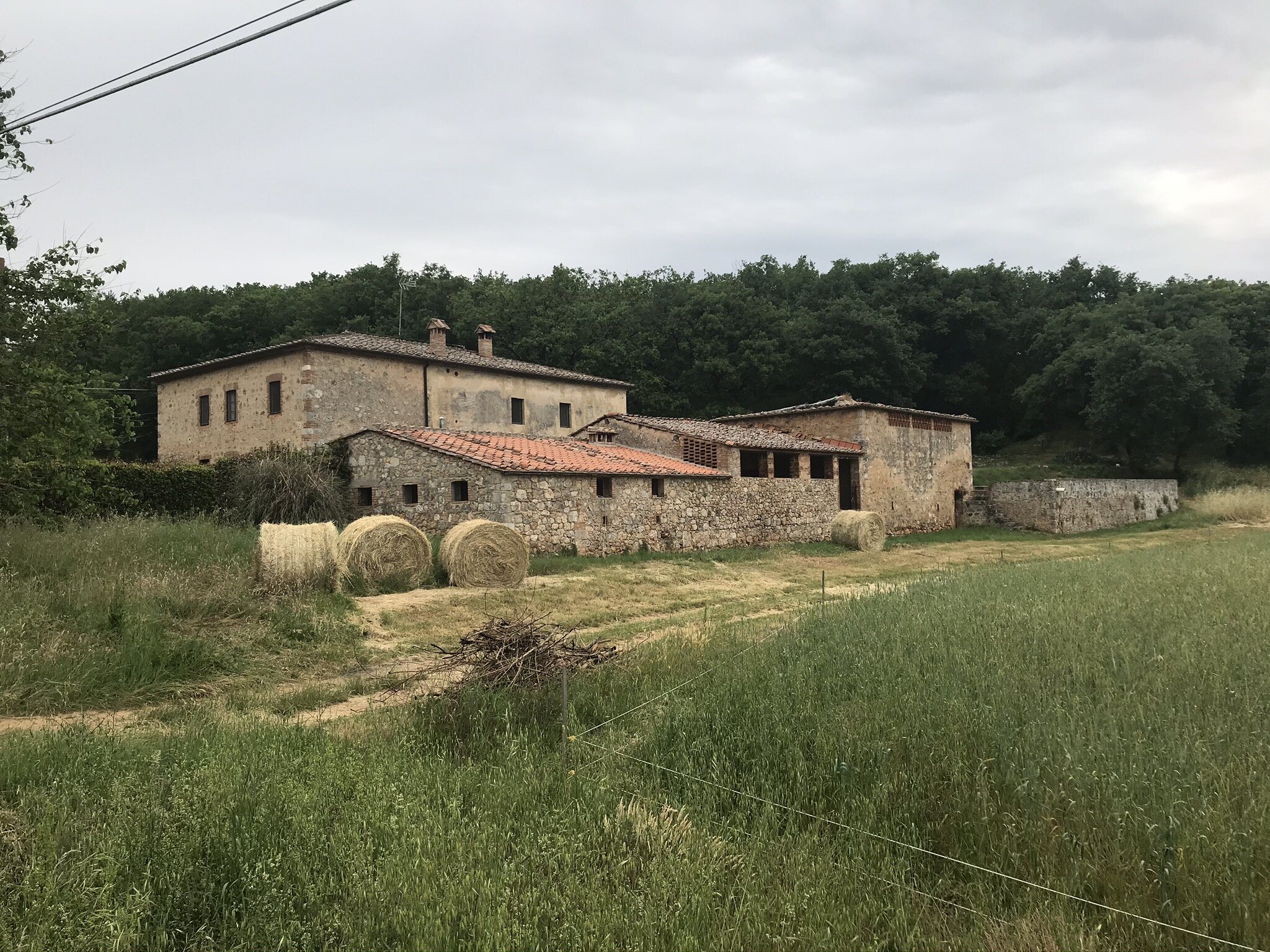
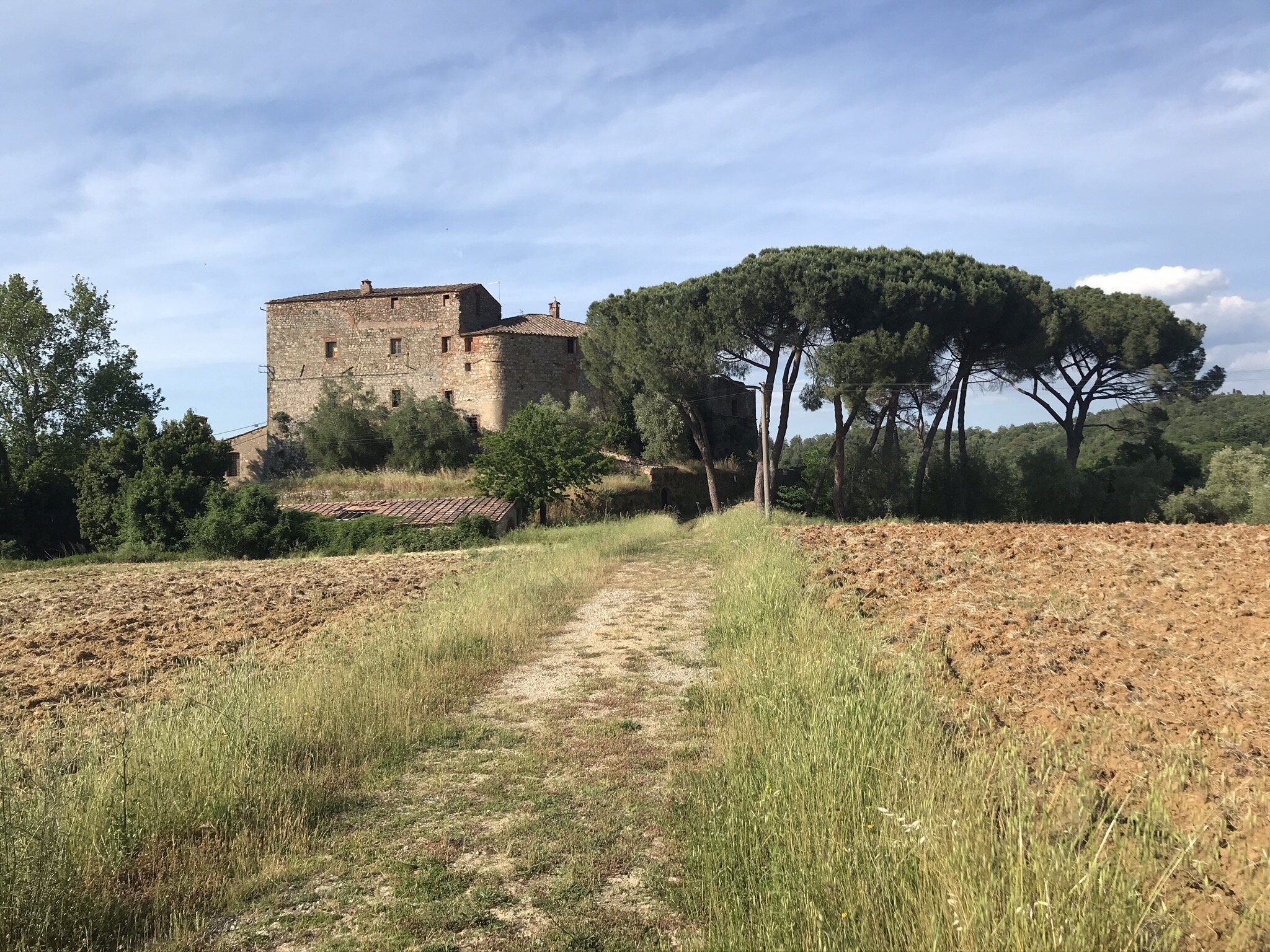
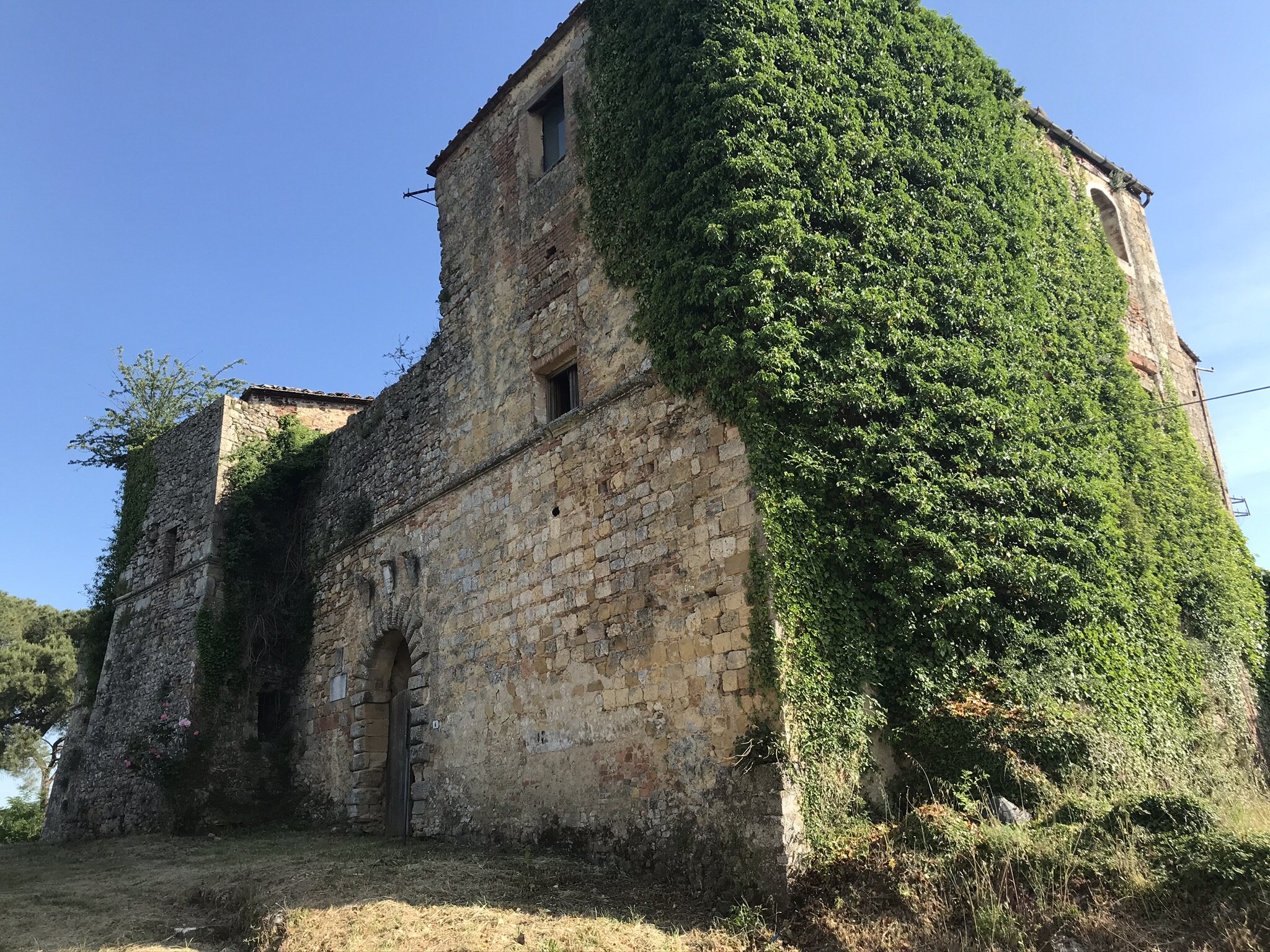
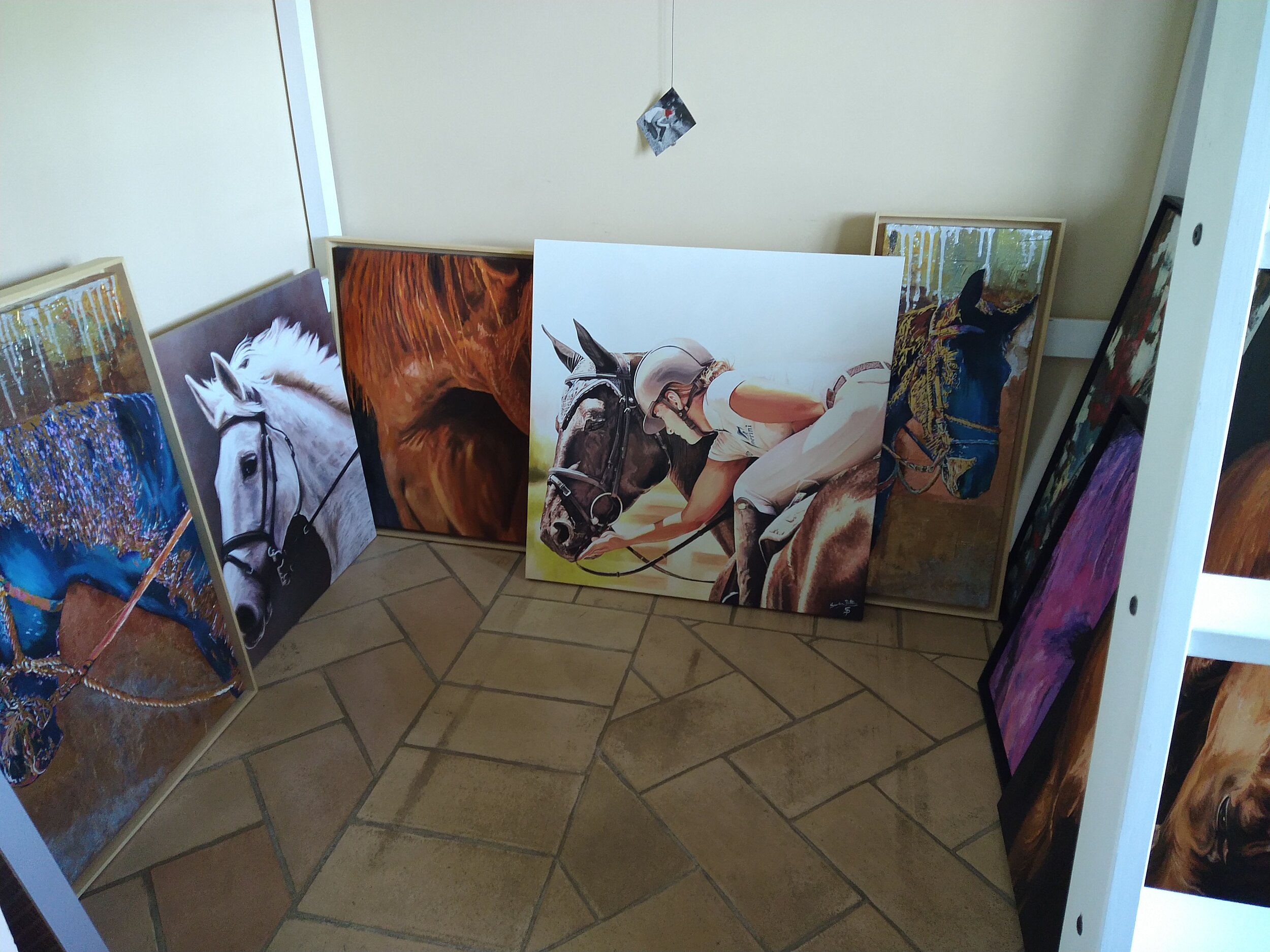
Toscano rustico
All of this extraordinary beauty and gluttony was always served or paired with an intense quaintness. Walking along dirt tracks in a field with Gustavo, an Argentinian immigrant who took up residence in Siena after studying in Spain, Russia, the U.S., and Bologna, abandoned properties blended in with the landscape, and wild edibles could be collected straight from the fields if you knew where to look for.
On a morning walk I was greeted by a passing runner in a way the Polentoni, or Northern Italians, simply don’t do. This is not to cast judgment on my neighbors, but only an observation on the way Tuscany has raised her sons and daughters.
The B&B, Il Ceppo, was operated by two men who along with piling on the kindness, piled on a lot of free stuff. I’m not even sure what I paid for. Their breakfast was represented by endless mountains of food, that while being properly Tuscan, was as varied as pesto and anchovies with red wine, next to coconut cake and coffee, and seemed to me to be a mix of many different cultures together.
Meeting locals, going for walks in a Norwegian-style “friluftslyf” across the hills, an older and yet unchanged splendor mentioned above begins to reveal itself. It’s something in the air, in the color of the brick and the dirt. You’ll notice it if you let yourself.
To glimpse the older, traditional, unaltered beating heart and essence of a country or people usually takes a stroke of luck, or the greatest effort, but Tuscany is different. WaL
If you think the stories you’ve just read were worth a few dollars, consider donating here to our modest $500-a-year administration costs.
Continue exploring this topic — Italy — In Northern Italy Lago d’Orta is as Beautiful as It is Unknown
Continue exploring this topic — Italy — Capri, Ischia or Procida: Which of Naples’ Islands Should You Visit?
Continue exploring this topic — Italy — Macugnaga – Trekking, Skiing, and Dining on Europe’s Second Highest Mountain



